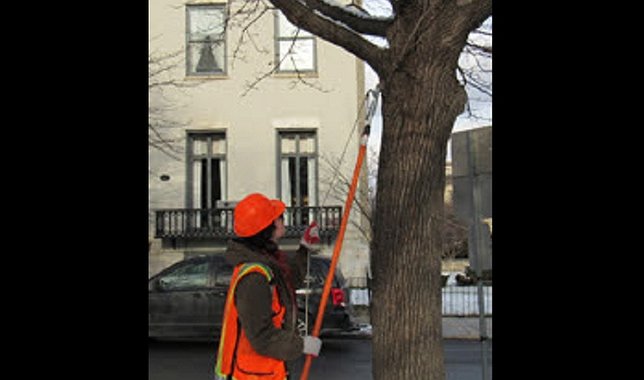Albany, NY - January 12, 2017 - Oak wilt, a deadly fungal disease for oak trees was discovered in six new locations in New York last year. This disease can be spread by beetles that are attracted to freshly cut or injured trees. Pruning in winter protects oaks from becoming infected.
Benefits of winter pruning:
- Diseases are rarely spread during this time, since insects and fungi are inactive.
- A tree's branch pattern and damaged limbs are easier to see without leaves.
- Leafless cut branches are lighter and easier to carry.
- Nearby plants are less likely to be damaged by falling branches and trampling.
- Removing weak and damaged branches before heavy snowfall reduces additional breakage.
- Trees pruned in winter respond more vigorously in the spring, putting out new growth.
How does oak wilt spread and kill trees?
The oak wilt fungus clogs the trees’ transport vessels, cutting off water and food from leaves and the rest of the tree. One way oak wilt spreads is when fungal spores hitch rides on insects. Sap beetles, one of the main culprits, are extremely attracted to fresh tree wounds. Pruning oaks during the growing season greatly increases the chances of insects infecting them with oak wilt.
What else can I do to protect my oak trees?
-
Prune oaks between October and February – NOT during the growing season.
-
Follow existing regulations and quarantines meant to protect our trees and forests.
-
Don’t move firewood. Firewood can transport oak wilt and other deadly pests and diseases to new areas.
-
Learn to identify the symptoms of oak wilt which include discoloration around the entire leaf edge and sudden loss of a substantial portion of leaves during the summer.
For questions, contact the DEC Forest Health office at 1-866-640-0652, or email photos of tree symptoms.
Visit the DEC website for more information on oak wilt.










